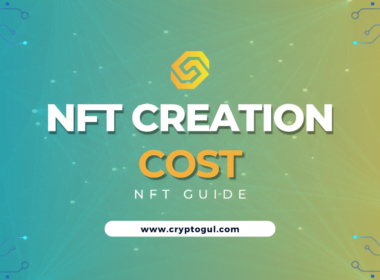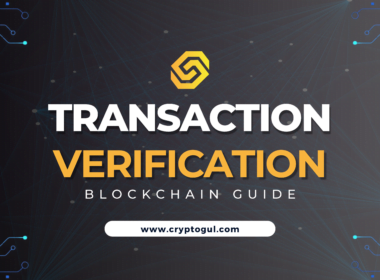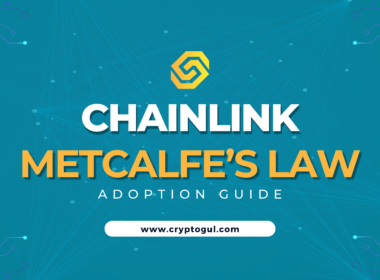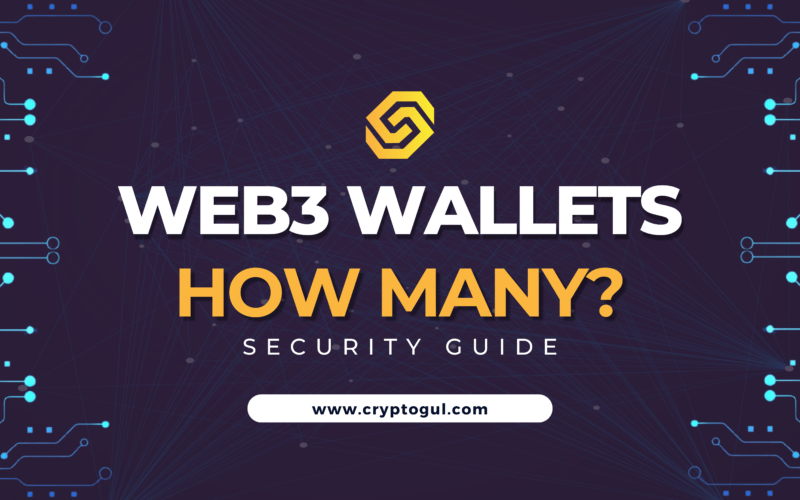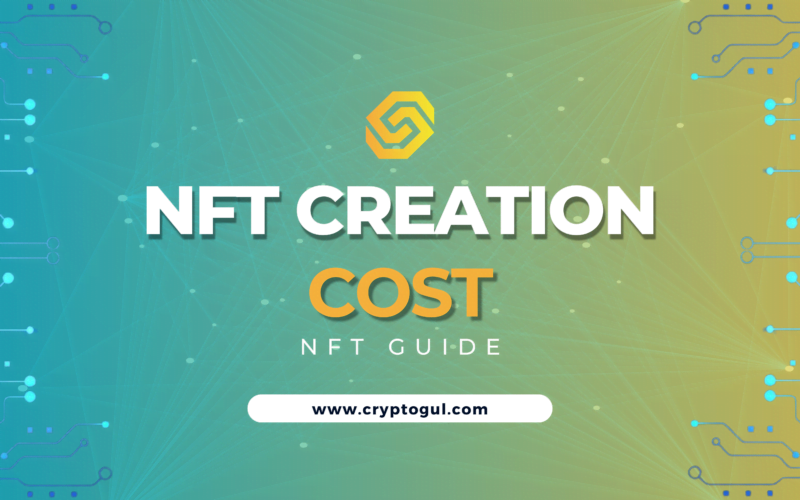If you’re trying to grasp “how is a transaction verified on a cryptocurrency network”, you’re in the right place. Verification is achieved through a blend of cryptographic validation and network consensus, without a central authority. Through straightforward explanations, this article unpacks the technology and procedures that make digital transactions both secure and decentralized.
Key Takeaways
Cryptocurrency transactions are secured through the use of public and private keys, with the latter kept secret in a wallet, and their integrity is verified using digital signatures based on the sender’s private key.
The blockchain acts as a decentralized ledger that relies on consensus mechanisms like Proof of Work and Proof of Stake to verify transactions, with miners playing a significant role in the process by using computational power to solve puzzles and add blocks.
Challenges in cryptocurrency transaction verification include scalability issues, network congestion, and high energy consumption in Proof of Work systems, while sharding, Layer 2 solutions, and alternative consensus mechanisms like Proof of Stake present future development opportunities for improved efficiency and sustainability.
Understanding Cryptocurrency Transactions

Every cryptocurrency network, including the bitcoin network, is underpinned by its transactions. These are electronic messages that carry instructions for transferring digital assets and are safeguarded through cryptography, maintaining the transaction chain’s integrity. This process involves a set of public and private keys, akin to an email address and password, which play a crucial role in the transaction’s security.
Public and Private Keys in Crypto Transactions
At the heart of every cryptocurrency transaction lies a pair of cryptographic keys. The public key, a randomly generated sequence of letters and numbers, functions as a digital address where anyone can send funds. This key is safe to share with others, acting as an identifier for receiving cryptocurrency transactions, including those involving bitcoin addresses.
In contrast, the private key is a secret sequence of letters and numbers that provides the ability to spend funds associated with the public address. Similar to a password, the private key is confidential and typically housed in a cryptocurrency wallet. This could be a software or hardware device that safely enables access to the user’s funds.
Digital Signatures: Ensuring Transaction Authenticity
Just as a handwritten signature verifies the authenticity of a document, a digital signature validates the integrity of a cryptocurrency transaction. Digital signatures are unique cryptographic proofs created by hashing transaction data and signing it with the sender’s private key. Their security is highly dependent on the security of the private key used to create them, making safeguarding private keys of paramount importance.
In the blockchain verification process, these digital signatures validate the link between the transaction and the rightful owner. In the case of Bitcoin, the Elliptic Curve Digital Signature Algorithm is used to achieve this. Thus, digital signatures serve as a robust proof of authenticity, enhancing the security of cryptocurrency transactions.
The Blockchain: A Decentralized Ledger for Transaction Verification

As the backbone of both cryptocurrency transactions and blockchain transactions, blockchain technology provides a decentralized ledger for verifying transactions. Functioning without a central authority, blockchain distributes decision-making across a network of nodes, ensuring transparency and reducing the risk of fraud.
How Blockchain Networks Maintain Consensus
A smooth operation of the entire bitcoin network, as a prominent example of a blockchain network, requires unanimous agreement amongst all nodes on the validity and sequence of transactions. This agreement is achieved through consensus mechanisms such as Proof of Work (PoW) and Proof of Stake (PoS).
In Proof of Work, network nodes compete to solve a hash function associated with a block. The first node to find a solution and have it verified by other nodes succeeds in adding the block to the blockchain, thus reaching consensus.
Contrarily, Proof of Stake chooses a node to validate transactions based on its network stake. This approach reduces energy consumption and increases transaction validation efficiency.
The Role of Miners in Verifying Transactions
Miners play a vital role in the operation of a blockchain network. They utilize their computational power to solve complex mathematical puzzles, a process known as proof of work. This involves finding a hash that satisfies certain conditions, such as having a specific number of leading zeroes.
Upon successful resolution of the cryptographic puzzle, the miner circulates the solution across the network. The proof of work’s validity, based on the previous block, is then verified by other nodes prior to the block’s addition to the blockchain.
In addition to the block reward, miners are also incentivized by transaction fees paid by users to have their transactions included in the next block.
The Cryptocurrency Transaction Verification Process
The process of validating transactions in a cryptocurrency network involves a series of steps that ensure the transaction’s integrity and authenticity. These steps include broadcasting transactions to the network, mining and block confirmation, and transaction fee prioritization. One of the main goals of this process is to verify transactions.
Broadcasting Transactions to the Network
A cryptocurrency transaction, such as a bitcoin transaction, involves several steps in the process of bitcoin transactions:
Initiation: The transaction request is created and signed by the sender’s wallet software.
Broadcast: The signed transaction is then broadcasted to the network, where it is shared with other nodes.
Ledger modification: The network nodes validate the transaction and update their local copy of the blockchain accordingly.
Best-effort basis: The broadcasting of transactions is done on a best-effort basis, meaning that nodes can leave and rejoin the network at any time, updating their local copy of the blockchain upon reconnection.
These steps ensure the secure and decentralized nature of cryptocurrency transactions, including the ability to sign transactions.
This decentralized broadcasting approach reinforces the network’s robustness and resilience, even in case of a node failure. By having multiple nodes validate and record transactions, the network ensures that every transaction is transparent and verifiable by all participants.
Mining and Block Confirmation

Upon a transaction’s broadcast to the network, miners authenticate the transaction by checking the input’s key access and then strive to resolve a mathematical problem to suggest a new block for the blockchain. This involves finding a valid proof of work, a computational task that requires significant resources.
Once a block containing the transaction has been successfully solved and verified by other nodes, it is added to the blockchain and the transaction is confirmed. The entire verification process can take different amounts of time depending on factors like the blockchain protocol used and the level of network congestion. Additionally, the complexity of the transaction can also impact the verification time.
Transaction Fees and Prioritization

Beyond the block reward, miners are motivated to promptly confirm transactions with higher fees, as these fees constitute supplementary income. As the limited space in each block creates a competitive fee market, transactions with higher fees are more likely to be included by miners in the next block.
Users can adjust the fees they attach to their transactions depending on how quickly they need the transaction to be confirmed. Thus, the structure of transaction fees creates a competitive market where users can choose how much they are willing to pay to have their transaction confirmed faster.
Challenges and Limitations in Transaction Verification
Despite the many advantages of blockchain technology, there are challenges and limitations in the transaction verification process. These include scalability issues, network congestion, and energy consumption in Proof of Work systems.
Scalability Issues and Network Congestion
Scalability is one of the most significant challenges faced by blockchain networks. When the network fails to manage an escalating volume of transactions, it results in extended confirmation times and augmented fees for users. As the transaction volume surges, the impact on transaction speed becomes noticeable.
Network congestion often results in a fee market where users pay higher fees to prioritize their transactions, leading to variability in transaction costs. These scalability and congestion issues directly impact the efficiency of transaction processing and the economic model of transaction fees within cryptocurrency networks.
Energy Consumption in Proof of Work Systems
Energy consumption in Proof of Work systems is another significant challenge. These systems require substantial energy due to the computational power needed to solve complex mathematical problems in the mining process. Cryptocurrency mining operations, particularly for Bitcoin, result in extensive carbon, water, and land footprints, raising environmental concerns.
This reliance on non-renewable energy sources has led to calls for regulation and a shift towards investing in more energy-efficient cryptocurrencies. The need for sustainable and efficient consensus mechanisms is more critical than ever.
Innovations and Future Developments in Transaction Verification
Despite these challenges, the world of cryptocurrency is ever-evolving, with continuous innovations and developments aimed at improving the transaction verification process. These include strategies like sharding, Layer 2 solutions, and alternative consensus mechanisms.
Sharding: Scaling Blockchain Networks

Sharding presents a promising solution to scalability hurdles. This method partitions a blockchain network into smaller segments, or shards, enabling nodes to authenticate transactions within these individual shards. By enhancing transaction throughput, sharding alleviates scalability issues, ultimately improving the efficiency of the network.
However, sharding introduces new complexities and potential security vulnerabilities into the transaction validation and recording process. Developers must carefully manage aspects like cross-shard communication and adapt consensus mechanisms for the subdivided network.
Layer 2 Solutions: Enhancing Transaction Speed and Efficiency
Layer 2 solutions propose an innovative method to boost transaction speed and efficiency. Built atop Layer 1 blockchains, these off-chain networks or technologies expand their capabilities and adopt their security properties.
Such solutions enable the processing of transactions on parallel blockchains, which are later recorded on the main blockchain. This offers several benefits:
Improved scalability
Reduced congestion
Faster transaction speeds
Lower fees
Alternative Consensus Mechanisms
Proof of Stake (PoS) and Delegated Proof of Stake (DPoS) serve as alternative consensus mechanisms, providing enhanced scalability, efficiency, and diminished energy consumption. In Proof of Stake, validators are selected based on the number of coins they have staked and at random for increased decentralization and security.
PoS offers improved scalability and efficiency by not depending on computational power for transaction verification. Meanwhile, Delegated Proof of Stake allows network users to vote for delegates to validate the next block, enabling a quicker, more efficient consensus process.
Summary
We’ve journeyed through the complex world of cryptocurrency transactions, exploring how they’re verified, the role of blockchain technology, and the various challenges and innovations in this space. Despite the hurdles, the continuous evolution and development of solutions like sharding, Layer 2 solutions, and alternative consensus mechanisms paint a promising picture for the future of cryptocurrency transactions.
Frequently Asked Questions
How are cryptocurrency transactions verified?
Cryptocurrency transactions are verified when a miner solves a cryptographic puzzle using a protocol called proof of work, such as the Secure Hash Algorithm 256 bit (SHA-256). This system aims to prevent cyber attacks from any single entity or group.
Who confirms crypto transactions?
Miners confirm crypto transactions by adding them to a block on the blockchain, making the transactions irreversible.
Why do crypto transactions need to be validated?
Crypto transactions need to be validated to prevent double-spending and ensure that only legitimate transactions are added to the blockchain. This validation process helps maintain the integrity of transactions and the security of the blockchain network.
What is a cryptocurrency transaction?
A cryptocurrency transaction is an electronic message that carries instructions for transferring digital assets and is secured through cryptographic techniques to maintain transaction integrity.
How do public and private keys work in crypto transactions?
In crypto transactions, public and private keys work like an email address and password. The public key acts as a digital address to receive funds, while the private key allows the owner to spend the funds associated with the public address.


